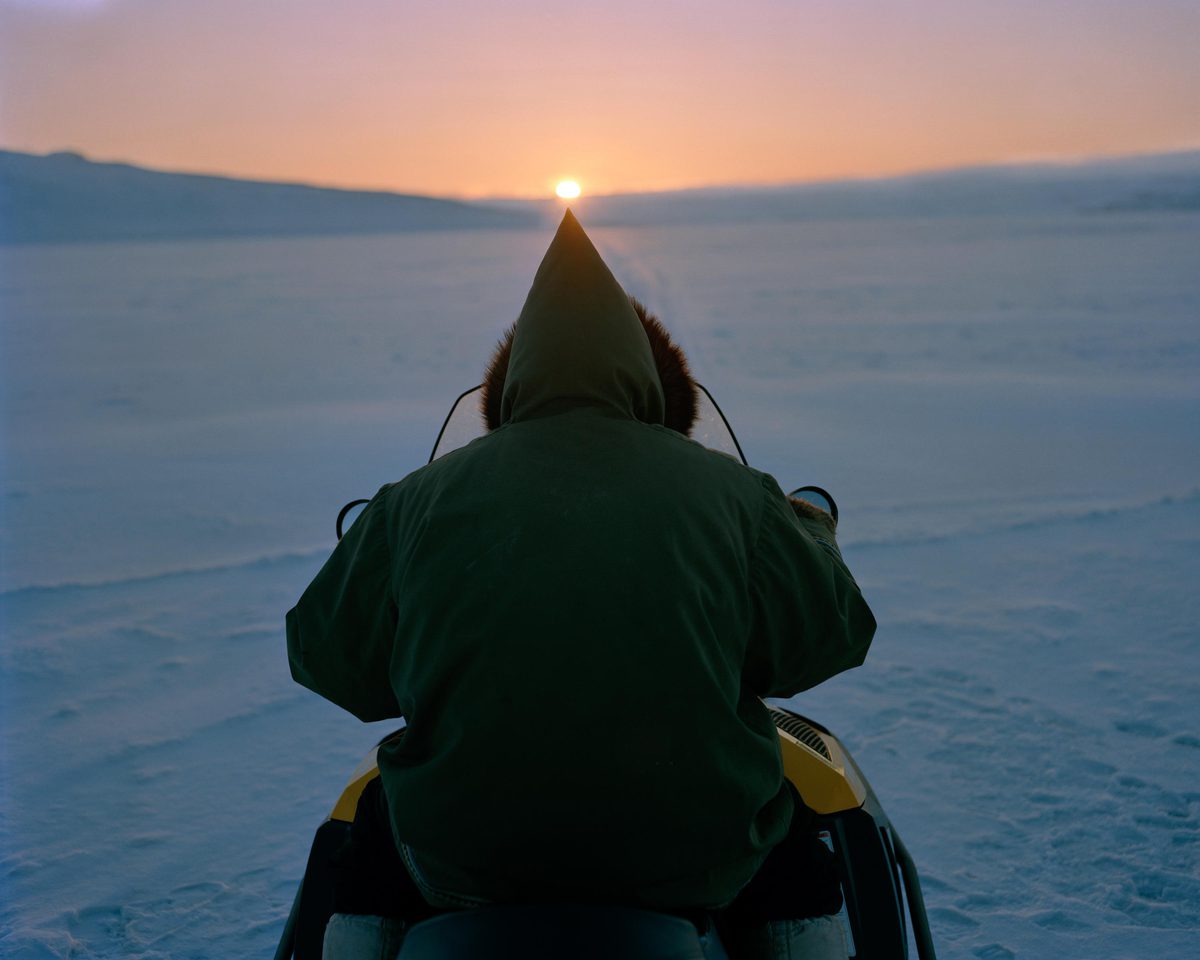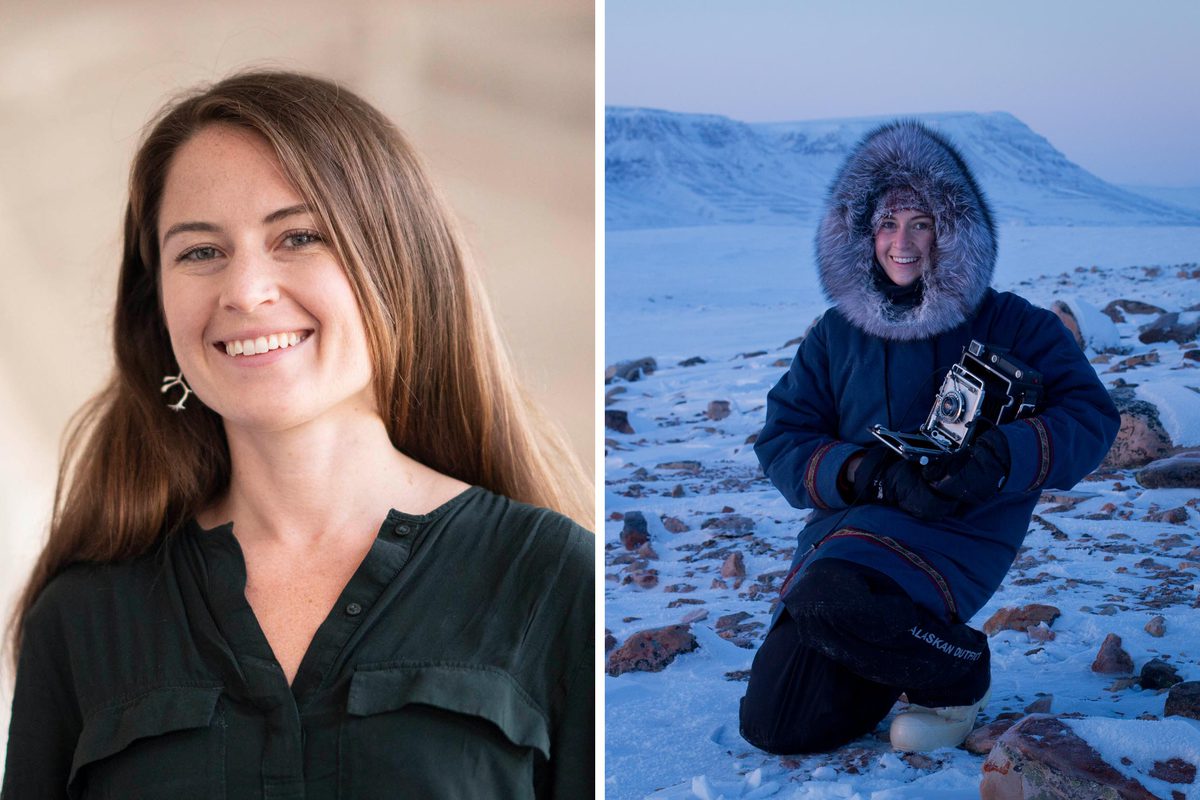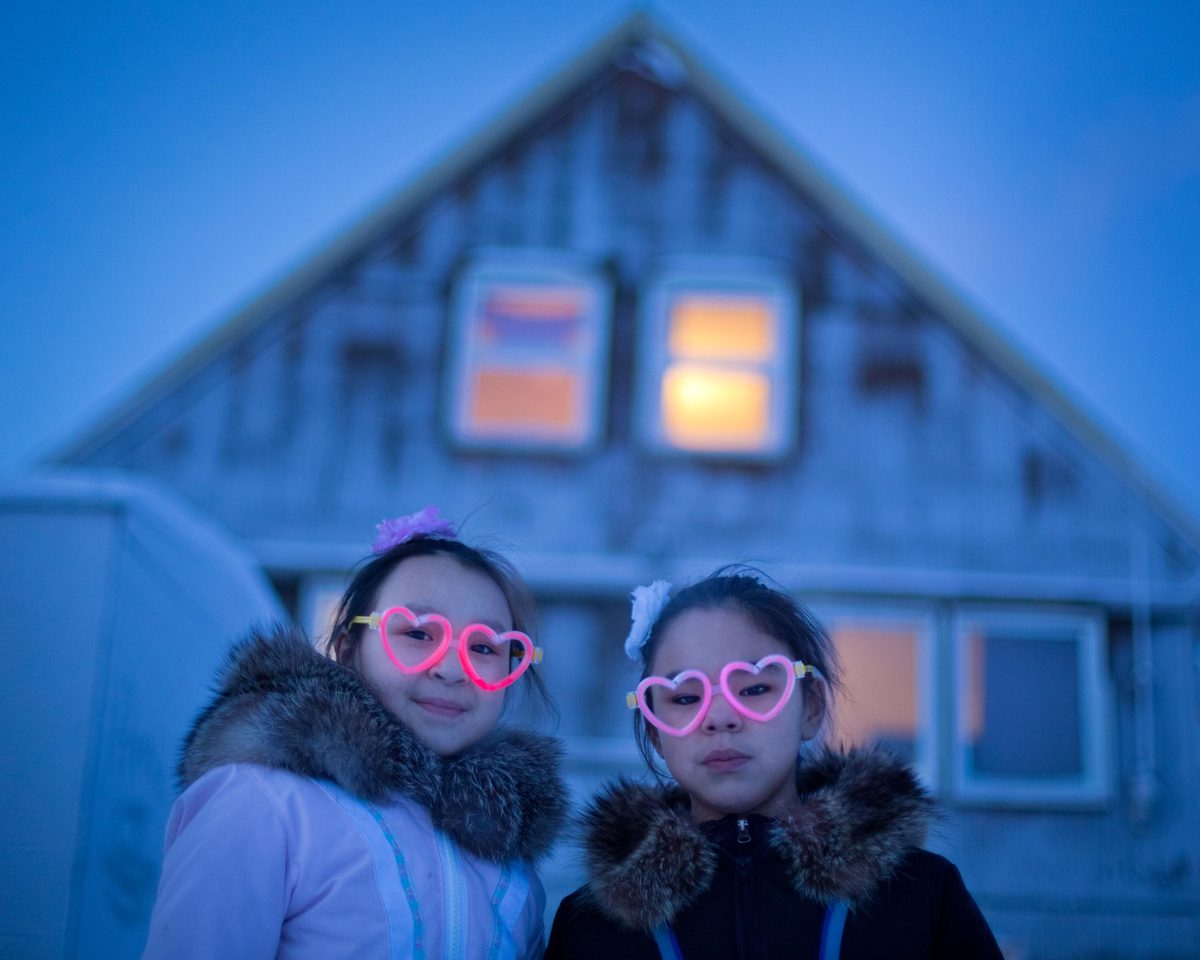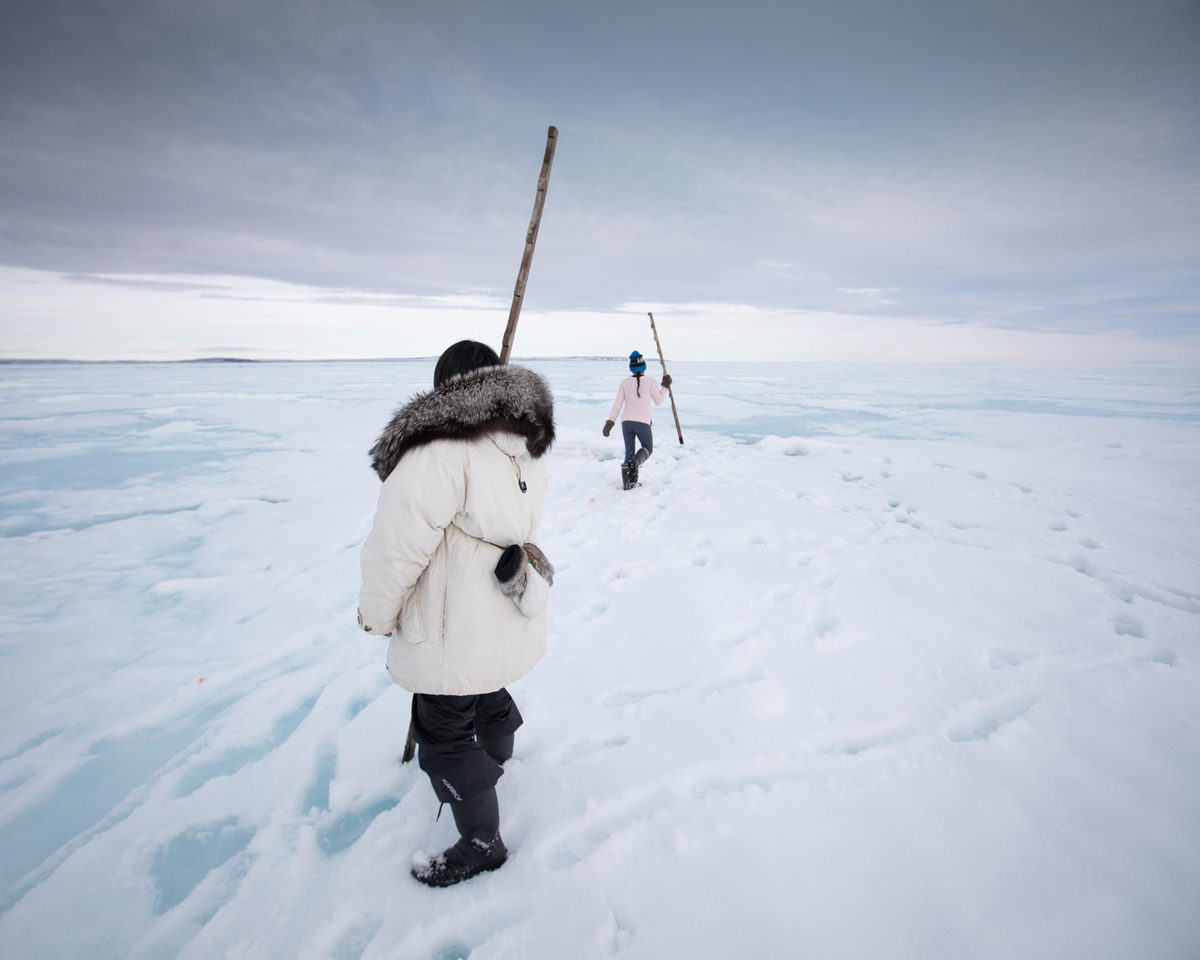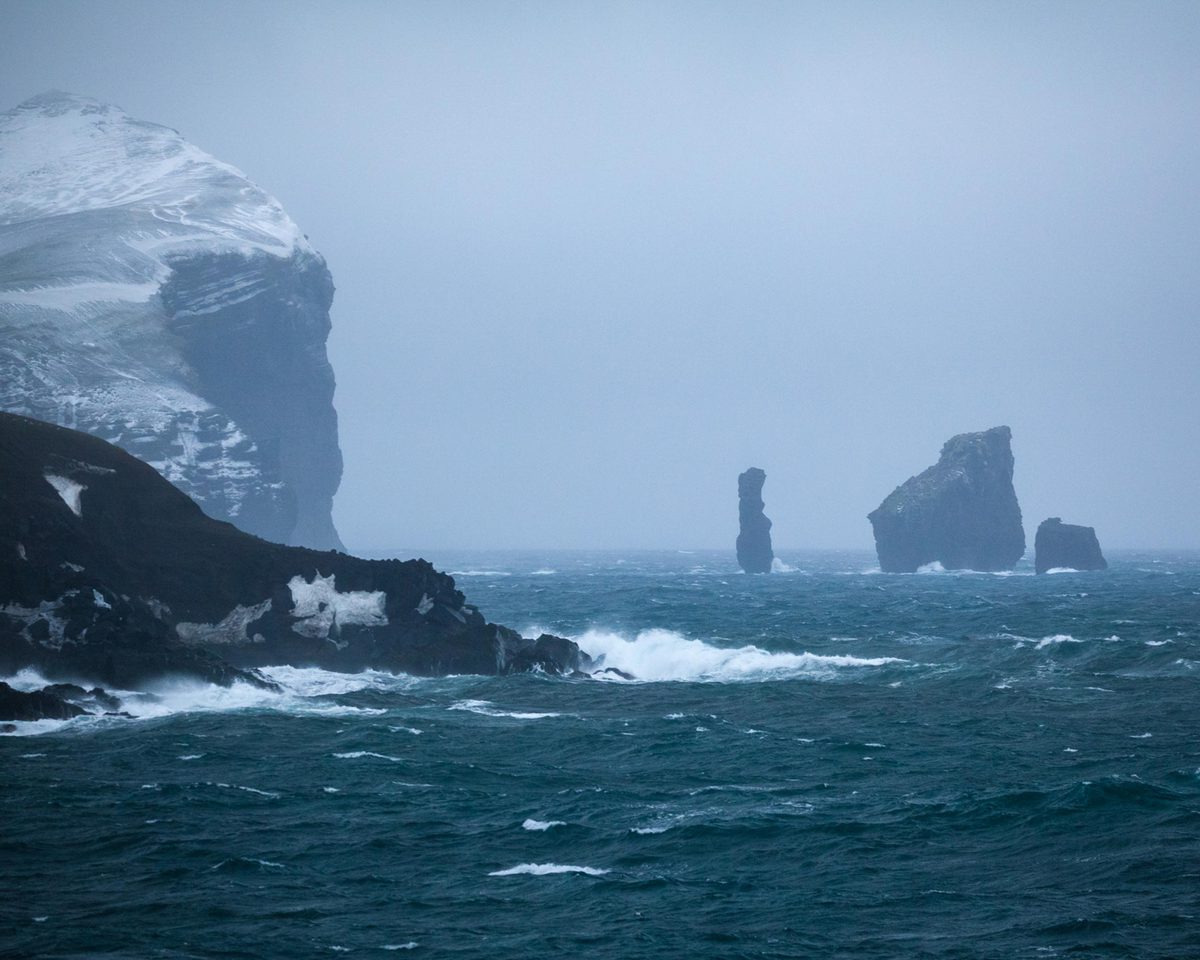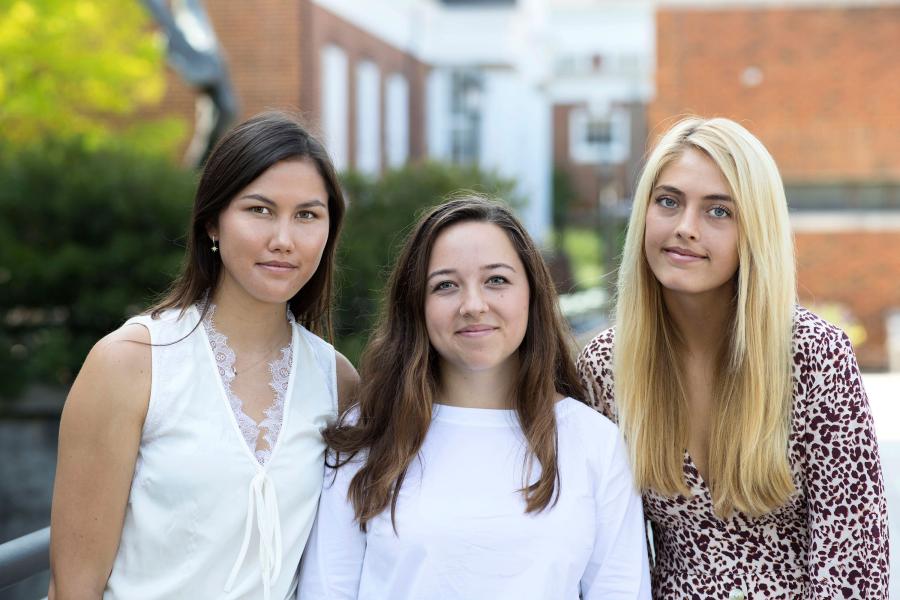Johnson said she has a deep affinity for the northern landscape, but when she went to Baffin Island, she realized she “knew nothing” compared to those belonging to cultures that have long lived in these environs. Staying with a family, she developed a deeper sense of what it means to live there.
“There I learned how little I know and the vastness of indigenous knowledge,” she said. “After all I’ve learned, I now see that I’ve only glimpsed the very edge of that knowledge. It moved me to grasp how much there is to know.”
She told the story of a friend in his 60s who had grown up in a traditional lifestyle – until the Canadian government forced the indigenous people to move into towns during the 1950s and ’60s. “It took him many years to recover from the trauma he endured as a part of that transition,” Johnson said. “Continuing traditional ways of life helped him.”
Johnson grew up with an anti-hunting ethos, mostly in reaction to trophy hunting. But she learned to appreciate the Inuit’s subsistence hunting of seals and snow geese, she said.
“It’s the heart of their culture and identity. I was humbled to be part of it.”
There’s also an urgency among the Inuit to maintain and pass along their way of life, which is now threatened by climate change and socioeconomic change, Johnson said.
Marcom, the creative writing professor, said writers have a role to play in telling the stories of climate change. “It’s really important that writers can tell powerful stories” about what’s happening, she said.
That is what Johnson tried to do in her National Geographic piece, “Before It Melts.” She writes, “In the past three decades, multiyear ice, the thickest (and oldest) type that supports the Arctic marine ecosystem, has declined by 95%. Elders no longer can predict safe travel routes on thinning ice, and animal migration patterns are changing. The future of the ice – and those who live on it – is uncertain.”
Getting her photo essay in National Geographic was lucky, Johnson said. The magazine can be planned out years in advance, but when she showed an editor her project, “Sea Ice Stories,” in January, it coincided perfectly with an upcoming Arctic issue. Johnson had had a few small articles published online by National Geographic in the past, including an assignment to Deception Island, an active polar volcano in Antarctica, which was published online in 2018.
